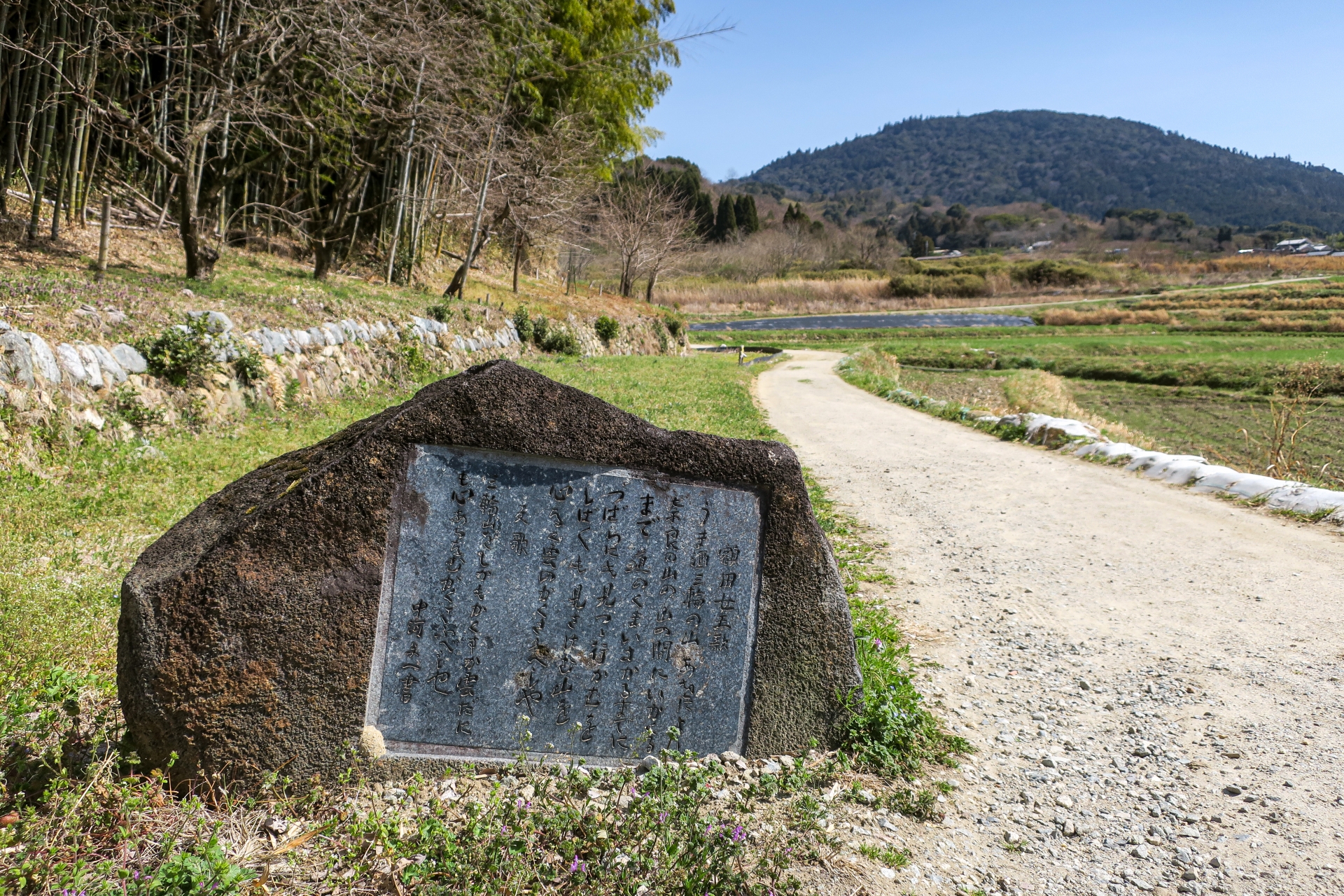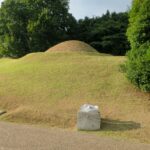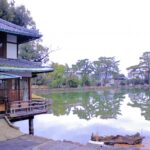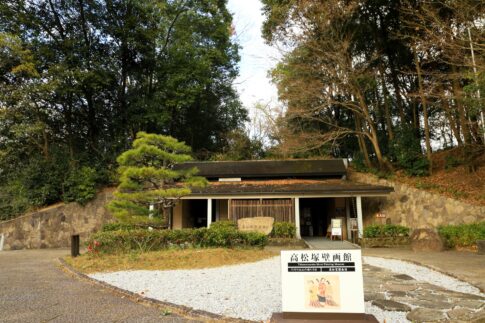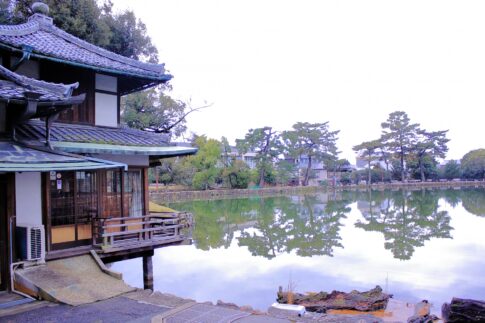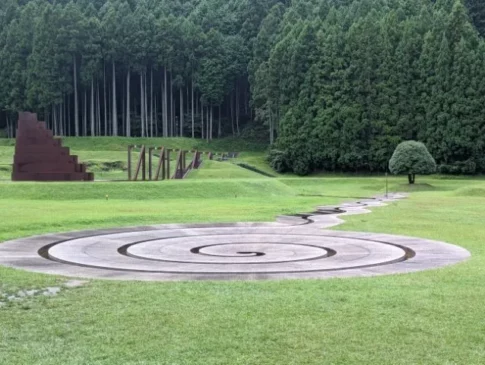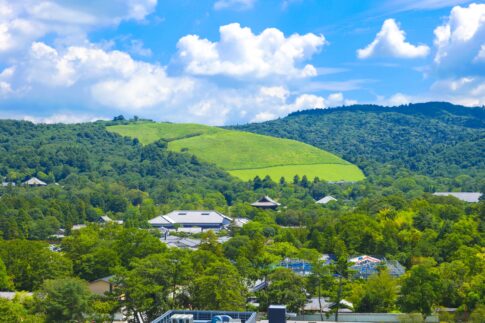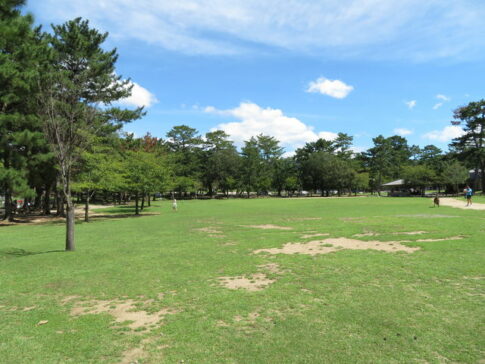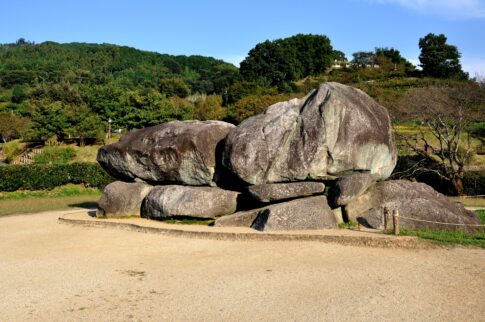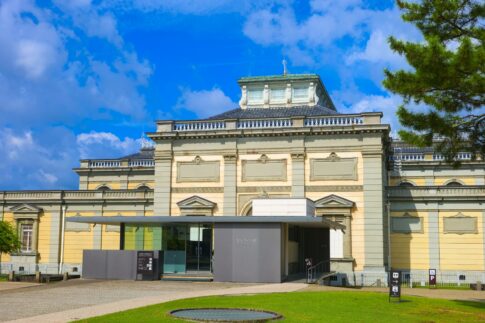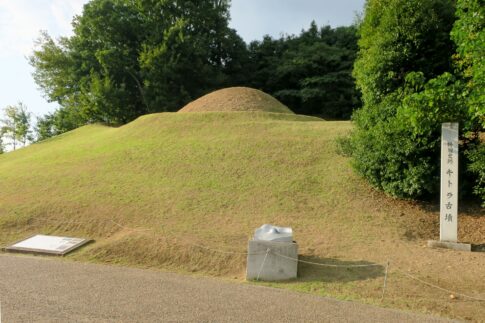Have you ever heard of Yamanobe Road?
It’s a beautiful place in the Nara Basin. The Nara Basin is surrounded by small mountains.
In ancient times, there was a road leading from the foot of Mount Miwa through Ishigami-fudome to Nara, as if weaving its way along the foothills of the beautiful Aogaki mountains to the east.
The name “Yamanobe-no-michi” is preserved in the Chronicles of Japan.
Along the Yamanobe-no-michi, there are still place names and legends associated with the Chronicles of Japan and the Manyoshu, and numerous historical sites that invite visitors into a world of ancient romance.
What you need to know before visiting Yamanobe Road
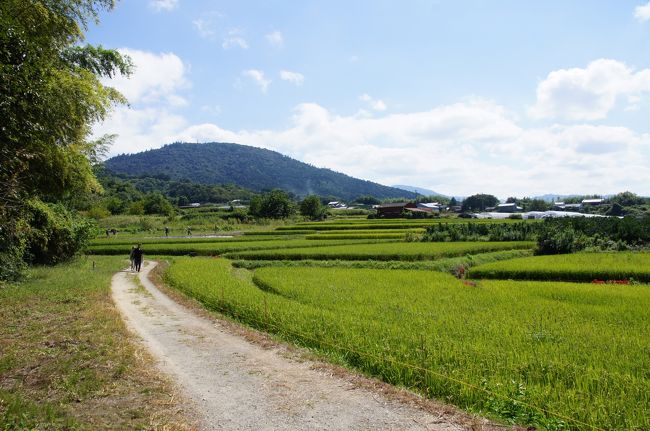
1. Enjoy Walking
There are gentle ups and downs.
There are many paths on the ground, so wear comfortable shoes!
There are convenience stores and supermarkets are located near Tenri Station, Sakurai Station, and Yanagimoto Station.
There are vending machines and tea stores are available along the route for rest and drink.
When walking the route several times, it is easy to divide the route into two sections, one on the Tenri side and the other on the Sakurai side, by using JR Yanagimoto Station, which is about halfway along the route.
The national highway (Route 169) on the west side of the route is a bus route, and buses can be used for starting and returning halfway along the route.
There are many unmanned stands selling local vegetables and fruits along the route.
The Yamanobe-no-michi is an ancient road running north-south along the foothills of the Nara Basin.
The route from Tsubaichi, known for its Utagaki, through Miwa and Yanagimoto to Ishigami Jingu Shrine is generally called “Yamanobe-no-michi(Yamanobe Road)”.
It is said to be the oldest road in Japan.
Along the road, there are many famous places and historic sites that appear in the Kiki and Manyo periods, leading you to the world of myths and ancient romance.
Walking slowly along this ancient road, you can enjoy the view of the three Yamato three mountains in the Nara Basin and Mount Nijo.
2. The Model Course
Yamanobe no Michi Walking Course (Time required: about 3 hours including the tour)
The place where Buddhism was introduced to Japan
During the reign of Emperor Kinmei, an envoy from Baekje visited this area and presented a statue of Vajra to the emperor. This area was also the site of the oldest market in Japan and the southern base of the Yamanobe-no-michi road.
↓
Oomiwa Shrine
This is the oldest shrine in Japan and the first shrine in Yamato Province. It is worshipped as the god of sake, medicine, and somen noodles.
↓
Hibara Shrine
Hibara Shrine is a subsidiary shrine of Oomiwa Shrine. It enshrines Amaterasu Omikami, and is also called Motoise. Around Idera Pond, there are several Manyo poetry monuments written by literary figures of the Showa period, which enhance the scenery.
↓
King Nukata Poem Monument
Among the many Manyo poetry monuments, this is said to be the most popular.
The poem beautifully expresses the feelings of King Nukata.
↓
Chogakuji Temple
Chogaku-ji Temple is a famous temple that was founded in 824 by Kukai as a shrine temple of Yamato Shrine at the request of Emperor Junna (824).
Although it is a bit of a side trip, the “Chopstick Tomb Tomb” is definitely worth a visit. It is said that people built the tombs during the day and gods built them at night. It is also said to be the tomb of Himiko.
3. Attractive Nearby Spots
- Kanaya no Ishibutsu (stone Buddhist image)
The stone Buddha is enshrined in a repository located in a row of houses in Kanaya along Yamanobe no Michi, and can be viewed through a lattice.
Two mud slabs 2.2 m high, 79 cm wide, and 21 cm thick are carved in relief with the Sakyamuni Buddha (right) and the Maitreya Buddha (left).
There are various theories as to when these statues were carved: late Heian period, Kamakura period, or late Tenpyo period.
Originally located at Byodo-ji Temple, they were moved to the present location by villagers during the Meiji Restoration (1868-1912) due to the abolition of Buddhism. It is a national important cultural property.
- Tsubaichi Kannon-do Temple
Tsubaichi, which appears in Manyoshu and Nihonshoki, is the oldest city in Japan.
It refers to the Kanaya area at the foot of present-day Mount Miwa.
As a place where the overland route of Yamanobe no Michi and the waterway of the Yamato River intersected, the market had been held since ancient times.
It is also known as the site of the legend of Kagehime’s unlucky love and a place where people exchanged love songs (utagaki: a place where poems are exchanged).
Later, it flourished as an inn for pilgrims to Hase-dera Temple and appears in “The Tale of Genji” and “The Pillow Book. Today, there is no city in the area, but the Kannon-do Temple still retains its name.
- Hashihaka Burial Mound
This is a 272-meter-long, front-recessed circular burial mound.
The Chronicles of Japan states that it is the tomb of Yamatotsu-no-Hyakusohime-no-Mikoto and was built around the time of Emperor Sojin.
It is said to have been built by a man during the day and by a god at night.
Hime-no-Mikoto was the sister of the grandfather of Emperor Sublime and the wife of Omonokunushi, the god of Miwasan.
The god, who visited only at night, is said to have turned into a serpent when he heard Hime-no-Mikoto’s wish and stayed until morning.
When Hime-no-Mikoto was startled and made a fuss, the god returned home in a fit of affection.
Hime-no-Mikoto is said to have committed suicide by poking her pubic region with a hashi, hence the name “chopstick tomb”. There is also a theory that this is the tomb of Himiko.
- Hokenoyama Tomb
Hakenoyama Kofun is a front-rear circular burial mound.
The burial mound is 80 m long, with a posterior diameter of 60 m and an anterior length of 20 m.
It is surrounded by a moat and has a thatched roof.
Excavated artifacts: a mirror with a painting design on its side, a mirror fragment with an internal floral design, a few mirrors with half-flesh carving, 10 iron swords including a large sword with a ring head, more than 60 copper metal swords, more than 60 iron metal swords, and other iron agricultural implements.
Summary
Yamanobe Road is a very attractive spot to hike.
If you like walking, we recommend to visiting there!
